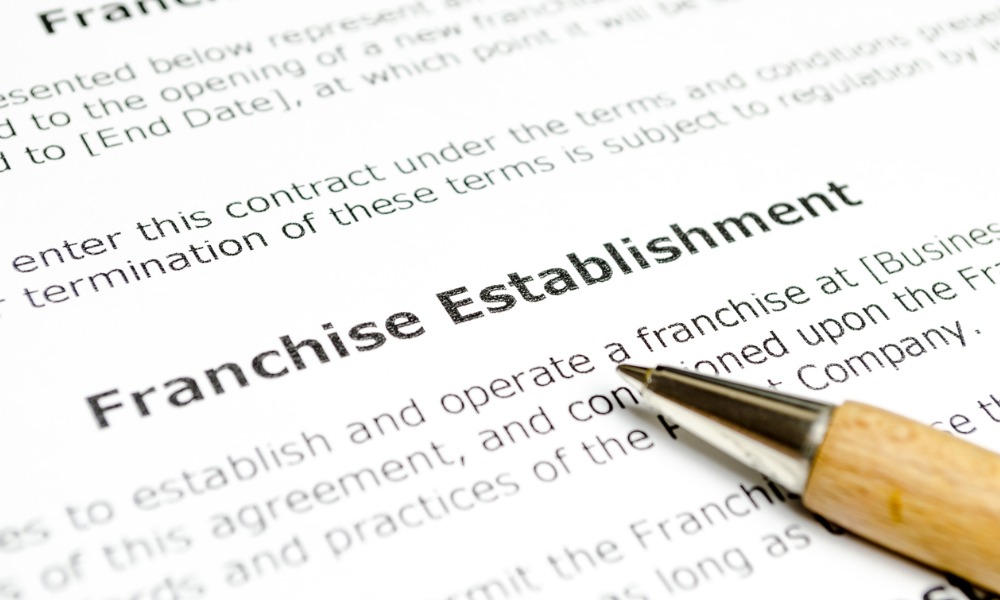Rising popularity of extreme activities highlight enforceability of signing away rights to sue

This article was created in partnership with McLeish Orlando LLP
Extreme activity facilities are popping up across the province, from trampoline parks and indoor rock climbing, to go cart tracks and simulated sky diving experiences. As they grow in popularity, it’s time to determine what the mandatory liability waivers actually mean. Because if someone is injured while partaking in one of these activities, even if they signed a waiver beforehand, the analysis doesn’t stop there, says Nick Todorovic, partner at McLeish Orlando LLP.
Todorovic is seeing more cases cross his desk where the plaintiff is injured, commences an action, and the insurance company immediately brings a summary judgment motion to have the case dismissed.
“The insurance company argues there’s no reason to go further because the plaintiff signed a waiver, but the plaintiff says they had no idea they were signing away their rights to sue — that’s where the battleground is on these cases.”
Where does the law stand?
One of the main points in Ontario with waiver laws is that the exclusion of liability clauses, per se, is not unreasonable or unconscionable in the context of dangerous sports and activities. The question becomes whether the exclusion of liability is enforceable against the person who signed the document.
“The plaintiff can’t unilaterally contract out of a waiver they knew or ought to have known was a condition of participating in the activity and it’s impossible to pick out certain clauses from the waiver and ignore them as not being binding on the plaintiff — but there are a few exceptions in terms of enforcement,” Todorovic says.
The first two — “non est factum,” alleging that the signature on the waiver is not the act of the plaintiff, and the argument that the plaintiff’s signature was induced by fraud or misinterpretation — are specific types of cases that don’t happen often, but the last factor is where the fight happens, Todorovic says. It states that the defendant knew or ought to have known that the plaintiff did not intend to be bound by the waiver and therefore the defendant had a duty to highlight the terms of the waiver to the plaintiff where they want to create a specific type of exclusion.
“The defendant in these cases must prove more than that they simply handed the waiver over to be signed, they’re obligated to take reasonable steps to actively draw the plaintiff’s attention to the terms of the waiver and failure to do so amounts to essentially a misrepresentation by omission,” says Todorovic. “When running a case that has a waiver, you want to make sure you’re dealing with this third factor in being able to create that exclusion of the waiver.”
When examining the plaintiff as well as those representing the company, McLeish Orlando drills down on whether the plaintiff was made aware of the conditions of what they were signing. Is the exclusion of liability inconsistent with the overall purpose of the document, and therefore contrary to the party’s normal expectations? What was the time available to read, understand, and ask questions about the document? Did an employee walk them through it? Was the plaintiff rushed, was it their first visit, or did they have no previous experience with waivers? Did the plaintiff indicate they were not prepared to sign it?
When it comes to the waiver itself, what is the length and format of the document — are there checkbox prompts or bold or highlighted portions drawing attention to the onerous terms? Does it actually say you’re waiving the rights of them being negligent? On top of that, do they include broad language to include all activities you could possibly get hurt using — in the example of a trampoline park, trampolines, balance beams, foam pits, slides, and mats?
The Occupiers’ Liability Act (OLA) must also be accounted for, or the injured party can go after the facility through the act. Another nuance is how broad the waiver is in terms of who’s covered. For example, some might say you can’t sue the corporation, employees, or “all entities related” but if a third party isn’t covered, the waiver won’t apply. Caselaw around this includes Kemps v. Nguien, where a cyclist participating in a charity ride was hit by another cyclist, and as the waiver didn’t include other participants the injured party was able to sue the person who injured them, and Stein v. Exec-u-fit Personal Fitness Training Centres, where a person fell while rock climbing in the facility, the waiver didn’t include the instructor, and the injured party sued them. The issue on the summary judgment motion was whether the defendant intended for the waiver to extend to the instructor.
“There are many factors, including the wording of the waiver,” Todorovic says. “If they don’t specifically include some of these items, they might not be contemplated and the company might be out of luck.”
Recent caselaw: Zaky v. 2285771 Ontario Inc.
A 2020 decision, Zaky vs 2285771 Ontario Inc., further clarified the law on the enforceability of waivers. In this case, the plaintiff arrived at a trampoline park late and his friends were already jumping. The employee brought the plaintiff to a kiosk and urged him to hurry and sign the waiver as he was missing out on his jump time. The plaintiff quickly signed, joined his friends, and ended up sustaining serious injuries. He sued the trampoline park and like every other case, the defense brought a summary judgment motion claiming a waiver defense.
It was an uphill battle for the defense given that the plaintiff’s affidavit was uncontested and the defendant wasn’t able to provide any evidence from employees present on the day of the injury. The judge ultimately dismissed the motion, concluding there was “a genuine issue requiring a trial.”
The judge relied on “very specific factors,” Todorovic says, including that the plaintiff only had experience with waivers only on that one occasion; he was rushed through the process by the employee; none of the important terms captured attention; and there was nothing else communicated by any employee about the waiver, leaving the plaintiff unaware he was signing away his rights to sue.
“Interestingly, at some point after the injury they took steps to change their waivers to incorporate these things — which is a bit damning for them,” Todorovic says. “I’ve seen that in my cases as well.”
The court held: “Surely, the mere fact that there was a waiver requirement cannot, in law, constitute reasonable steps to bring the terms of the waiver to the attention of the participant.”
Overcoming waiver defense hinges on nuance
Generally, the Zaky decision summarizes how waivers are dealt with in Ontario: the terms must be put to people such that they can comprehend what they’re reading and understand what the consequences of signing are. But when it comes to deciding whether or not a waiver applies in your case, you must contemplate the nuances because “there’s a lot more to this issue than meets the eye,” says Todorovic.
“Some of these companies make very flimsy waivers — what appears rock-solid might not be and a person could potentially still get compensated for their injuries.”








